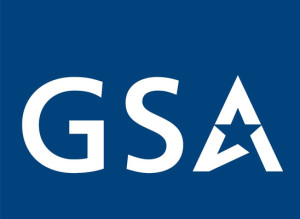
New strategy aims to tame $63B in spending on professional services
The Professional Services Category Management team released for industry comment a new strategic plan to improve how agencies buy and manage everything from man...
There is a new plan to help the government improve how it buys and manages professional services. Agencies spend almost $63 billion a year in this category, which range from real estate to financial to social services, but up to 40 percent of that spend isn’t tracked well.
Tiffany Hixson, the professional services category executive in the General Services Administration’s Federal Acquisition Service, said because agencies are labeling so many of those procurements as “other,” it’s hard to know what the government is really buying.
“We have a team of folks who have been rolling up their sleeves and working with the agencies to work through what’s in that other category with a goal of understanding if we need to have some other type of product service codes (PSC), some other type of coding process in the future so we have more clarity of what that spend is so we can really establish a baseline of what that spend looks like,” Hixson said in an interview after speaking at a recent AFFIRM event in Washington. “Then in our fiscal 2017 planning, we can really start to work as an interagency community to focus on here is what we are spending, where are the pain points in terms of that spend and start to think through how to provide better best practices, better buying approaches, where are there ways we can leverage how we are buying certain types of services.”
Getting some clarity to that 40 percent is one of several initiatives Hixson is teeing up for the next fiscal year as part of the Governmentwide Professional Services Category Strategic Plan released Aug. 2.
| Professional Services | ||||||||
| Level 1 Data | FY11 | FY12 | FY13 | FY14 | FY15 | |||
| Government Spend (in millions) | $69,123 | $66,466 | $64,427 | $62,774 | $63,353 | |||
| Transactions | 322,162 | 302,471 | 282,978 | 270,554 | 264,040 | |||
| Contracts | 23,985 | 24,850 | 24,824 | 23,769 | 22,896 | |||
| Suppliers | 43,840 | 42,391 | 35,294 | 33,820 | 32,327 | |||
| Stand Alone Orders | 66,245 | 60,840 | 53,571 | 51,789 | 50,932 | |||
| Small Business Percentage of Spend | 24.86% | 25.58% | 26.32% | 29.25% | 30.64% | |||
The category management professional services group is accepting comments from industry about the plan until Sept. 15.
“The plan is focused on really four key areas. The first is really developing and fleshing out a supplier relationship management strategy and engagement approach that we are looking for feedback from industry on … on where we need to focus and where we can establish really repeatable processes in terms of how we are engaging industry from a governmentwide professional services perspective,” Hixson said. “The second focus area is really understanding our spend. This past summer we did a deep dive on the $63 billion that is spent on professional services governmentwide.”
She said her group also is trying to improve how the government categorizes professional services.
“The initial structure given to us as a draft from OFPP didn’t really reflect how the government goes to market,” Hixson said. “In our initial look at that spend, we probably really want to restructure that so it really aligns with how industry is providing those services to use versus how it looks from government perspective in the Federal Procurement Data System.”
She said industry should focus on everything from the right metrics for buying services to fine tuning the acquisition process to developing good performance based contracts.
Hixson said the professional services category management team worked closely with agencies on the development of the strategic plan.
She said the team heard from senior leaders, program managers and contracting officers. Through the acquisition gateway, contracting officers, contracting officer representatives and program managers offered comments about their pain points, challenges and tool development.
| Top 10 Agencies, Professional Services Spend, FY12-14 | ||||||||
| Agency | Spend (in billions) | |||||||
| Army | $37 | |||||||
| Air Force | $28 | |||||||
| Navy | $23 | |||||||
| HHS | $18 | |||||||
| DoJ | $16 | |||||||
| OSD | $15 | |||||||
| USAID | $9 | |||||||
| OHS | $7 | |||||||
| NASA | $4 | |||||||
| DoT | $4 | |||||||
One concern about trying to apply the concepts of category management to professional services is it’s much more difficult than products, such as office supplies or desktops and laptop computers.
A new Professional Services Council white paper says one big risk is to focus solely or mostly on price.
“Another risk is that the government’s analysis will likely be across a labor category, which does not allow for the assessment of unique requirements that are consolidated within a single labor category,” PSC stated in the white paper. “For example, a software developer working in a well-known computer code and/or language is not the same in terms of cost and skills as a software developer working on an enterprise resource planning (ERP) tool such as SAP or PeopleSoft. However, a contractor may not have a labor category available to accommodate an ERP SW developer and be forced by the procurement to use the broader category.”
PSC says one way to address this concern is for the government and industry to refine the objectives of the category and ensure buyers and sellers have tools that address the broad spectrum of government purchases in the services category.
The industry association also highlights concerns over the Transactional Data Reporting rule, which could influence factors in how much agencies are willing to pay for specific services.
“The more complex the requirements for a given service category, the broader the range of realistic and reasonable rates,” PSC stated.
Hixson said federal acquisition leaders hear and understand industry’s concerns about not making price a major factor in services procurements.
“Yes, we have to look at labor category rates. We have pricing work really when we are looking at proposals that we have to do. It’s just part of the process. It’s just a tool,” she said. “But really both sides are very focused on what do we need to do to improve the quality of professional services contracting. That’s really what senior leaders in government want us to focus on. That was absolutely the first thing those senior leaders said in our first interagency working group meeting. The good news is the community is aligned on both sides.”
She said the category management group understands professional services is not commodities and they have to be looking at this strategically.
“There are other cost drivers we haven’t even started to identify and it has nothing to do with the unit price of an engineer,” she said. “I’m really hoping by sharing the plan publicly we are taking baby steps to building a foundation to focus on those larger, more strategic outcomes.”
Hixson said the category management team wants to finalize the baseline of where agencies are spending money on professional services, given that 40 percent is a “little murky.”
She said another major goal is to finalize the subcategories for professional services.
Copyright © 2024 Federal News Network. All rights reserved. This website is not intended for users located within the European Economic Area.
Jason Miller is executive editor of Federal News Network and directs news coverage on the people, policy and programs of the federal government.
Follow @jmillerWFED





